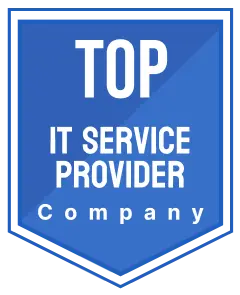Our Blogs

6 Myths About Hiring Dedicated Developers Debunked
Outsourcing dedicated developers is a favorite solution for those companies who are going to get cost-efficient and qualitative solutions. Yet there are many myths surrounding development outsourcing, which cause hesitation. Below, we will unravel some myths about outsourcing and in an attempt to demystify the facts from myths, unveil the truths about acquiring dedicated human capital. Are you ready to maximize the opportunities your business can create? Let our professionals guide you through implementing regular updates and solid enhancements to your website. Contact us today! 1. Myth: Small businesses cannot afford to hire or retain dedicated developers The first myth in the series Dismissing Misconceptions about Dedicated Developers is the notion of cost. Some think that having dedicated teams is an involving thing, which only large organizations can afford. Truth: Some dedicated developers even prove to be cheaper for the business in the long run because they do not require facilities such as office space, employee benefits, and training. Also, the flexible engagement model breaks barriers to outsourcing facts relevant to businesses, including start-ups and SMEs, that can afford to outsource based on their capacity. Small businesses benefitts from a dedicated development team in that they avoid diverting their attention from the business, which a dedicated development teamustto do. 2. Myth: Outsourced Teams Have Low Sense Of Ownership To The Project One common team stereotype is that external developers will not have the same commitment as an internal team and the quality will suffer as a result. Truth: Creditable outsourcing firms focus on forming long-term business relationships where competent developers are sourced and fit into your project's scope. The use of modern communication platforms such as Slack and Jira makes the process very transparent and clear Key performance indicators make the overall process extremely accountable. Outsourcing facts emphasize that special teams are indeed more engaged and provide a more diverse experience while working only on your project. 3. Myth: Taking the Service of Dedicated Developers Causes Security Threats Another classic myth regarding outsourcing is the statement that competition with external teams threatens business confidentiality. Truth: Predominant development firms exercise caution when it comes to the security of the data – all the communications are confidential NSAs are signed, access is controlled, and all international legislation, to name but a few examples, such as the GDPR, is adhered to. When selecting the right partners, you are on the safe side and deal with competent and resourceful team partners. From one or two experiences where researchers have experienced an unscrupulous outsourcer, this developer myth arises and can be so embarrassing due to research and proper legal contracts. 4. Myth: Poor communication is one of the biggest factors that is causing delays in development. Another myth about development outsourcing is that with an offshore or remote dedicated development team, things are not well understood and do not progress as planned. Truth: Today there are many tools such as Zoom for meetings, Asana, and Trello for organizing teamwork, that make it easy to communicate irrespective of the time zone and geographic location. Professional coders that can assimilate into your working schedule to achieve efficient working in real-time. This myth does not factor in the flexibility and business-like demeanor of the majority of dedicated teams, thus eradicating yet another myth relative to teams. 5. Myth: Dedicated Developers Can Only Handle Small-Scale Projects The first myth associated with dedicated development teams is that they are unable to bring optimal effort to complex or extensive projects. Truth: Since dedicated teams are genuinely business resources, they support the company’s flexibility and may easily hire in additional or minimize in accord as circumstances demand. This is because they can work at any end of the industries and the technologies and their capacity is limitless. When it comes to creating an enterprise solution a native app or even a small app, it is always a wiser decision to hire a dedicated development team. 6. Myth: Specifically, dedicated teams are said to be only for long-term projects Most people argue that having dedicated developers is only possible for the long-term, and give short-term or one-off work little consideration. Truth: Special teams are available to provide tailored engagement solutions that may suit short-term partnerships. Businesses can attend resources in a particular phase or a specific task. This feature affords firms an opportunity to find a dedicated development team for an idea’s evolution, the building of an MVP, or post-MVP support. See Also: In-House vs. Dedicated Teams: Which is Better for Your Business? Looking for ways to advance your business? We have experts who will ensure that your website suits your needs as you need it. Get started with us now! Final Thoughts Some misconceptions arise from time to time, and they cannot be refuted; people have changed their minds about dedicated development teams based on old trends or badencountersr. Analyzing the truths of hiring dedicated resources, it is possible to extend a business’s understanding of the value of such specific teams, their flexibility, and economic benefits. Outsourcing your business to a competent outsourcing company guarantees value, efficient communication, and protection of your information. Therefore in this regard let the myths about outsourcing vanish and join in embracing future efficient scalable development solutions. Please get in touch with us today to secure your projects’ future. FAQs: Q1: Are dedicated developers too expensive for small businesses? A1: No, flexible pricing models make them affordable for businesses of any size. Q2: Do dedicated developers lack commitment compared to in-house teams? A2: Dedicated teams are highly focused and align closely with your project’s vision and goals. Q3: Are security risks higher when outsourcing development? A3: Reliable firms ensure security with NDAs, access controls, and compliance with international regulations. Q4: Do communication gaps cause project delays in outsourced development? A4: Modern tools ensure smooth communication, overcoming geographical and time zone barriers. Q5: Can dedicated developers handle large-scale, complex projects? A5: Yes, scalable teams are equipped to manage projects of any size and complexity.
Read More
SEO Maintenance: Keeping Your Website Ranking High
The technique of retaining the website position in search engines is another challenging task that needs constant effort and planning. It is important to note that performing basic SEO maintenance is necessary even for websites that have been optimized to the professional level – the traffic and rankings tend to tank otherwise. The present SEO maintenance guide will assist you in knowing how you can maintain high rankings on your website and deal with new algorithms. Are you ready to maximize the opportunities your business can create? Let our professionals guide you through implementing regular updates and solid enhancements to your website. Contact us today! 1. SEO maintenance: Why it is important for your business? SEO is not a one-time deed, it goes on until the website is maintained. SEO maintenance helps your website remain relevant and competitive and ensures your place in the result pages. Changes in the search engine algorithms call for some changes in your site to retain the SEO rankings. Furthermore, the maintenance of the site and making it updated can lead to an increase in traffic to the site and boost its authority. 2. Audit Your Website Regularly to Maintain SEO Rankings Website audits are considered to be the basic approach to maintenance in SEO. Regular checking of technical aspects like links, content, or page load speed is easily conducted in a website audit. Key Audit Areas: Technical SEO: Run crawl errors, make sure the site is optimized for mobile, and ensure HTTPS. Content Quality: Relook at old content for general tidiness and also look at whether they meet today’s SEO requirements for maintenance. Backlink Profile: Google penalizes sites that have low-quality links that are also damaging to a site. Regular audits would help your website retain its ranking and provide a fruitful experience to users. 3. Maximise Content for Continuing Relevance and Search Rankings To maintain rankings, new and more updated content has to be created. This way the search engines know that your site is active and that it has useful content that should be indexed from time to time. SEO Maintenance Tips for Content Optimization: Keyword Refresh: Optimise your keywords and think about long tail keywords to now target changing search queries. Content Updates: Modify and update current information with relevant trends and/or advancements. Internal Linking: Internal linking focuses on getting users through the intended path whilst increasing the SEO relevance of your site. A content generation process is something that should be always integrated into any kind of long-term SEO plan. 4. Follow and Enhance Website Performance Website performance cuts across user experience and website ranking. If your site is slow or poorly converted, one can record very high bounce rates which are unbeneficial for SEO. Performance Optimization Checklist: Page Speed: Minify HTML, Images, CSS, and JavaScript files. Mobile-Friendliness: Make sure that the site is practical on all devices and it is very easy to navigate through the page. Error Resolution: Check and correct broken links or the famous 404 errors so that they don’t lead to a blank page. It is possible to maintain SEO ratings while increasing the interaction of visitors with the site, thus achieving the desired result in the optimization of your resource. 5. Checkback on the changes in the Google Algorithm Many website developers know that search engines such as Google make changes to their algorithms more often, affecting any SEO determined. Being aware of these changes makes it easier to tailor your site and thus makes website SEO rankings easier to maintain. How to Stay Updated: Follow SEO News: To date applicable changes from Google as well as reading industry-specific blogs and board bulletins. Analyze Traffic Drops: If you see that positions are changed drastically, this usually means that the results are influenced by the algorithm – adapt your work. Experiment and Adapt: Experiment occasionally to find new ways of improving your long-term SEO strategy’s success. This way, important changes are made to your website but it continues to rank high as has been anticipated. 6. Create and Sustain Comprehensive Backlinks External links are still a key component in most search engine’s formulas. The high quality and relevancy of the backlinks improve the site’s authority, and in turn the website’s ranking. SEO Maintenance Tips for Backlinks: Earn Quality Links: Concentrate on the websites with high authority from your areas of interest. Remove Harmful Links: De-index spammy or irrelevant backlinks As already mentioned, Google’s disavow tool can assist an individual do this effectively. Build Relationships: Get long-term links with influencers and popular sites that they would not mind linking their site with yours for several years. In any SEO maintenance guide, backlinks are incredibly vital, and the health of these links should be checked. See Also: Why Regular Website Maintenance Is Essential for Business Success Looking for ways to advance your business? We have experts who will ensure that your website suits your needs as you need it. Get started with us now! Final Thoughts SEO is a long-term process, therefore constant SEO care is the key to a high Website position. Effectively, this means auditing your site, optimizing content and performance, and keeping up to date with algorithm changes, so that you can settle into a strong long-term SEO strategy. Just remember that SEO is not a one-time project, it is a lifelong process of improving the ranking of a website. Devote adequate time and effort into spending on your site’s SEO to have long-term gains. Are you struggling to sustain website SEO ranks? For more detailed solutions regarding your SEO needs and long-term objectives call us now. FAQs: Q1: Why is SEO maintenance important for websites? A1: Maintenance therefore helps remain relevant and regain competitiveness where necessary, all to constantly improve user experience given algorithm updates. Q2: How often should I do an SEO audit? A2: Conduct SEO reports at least four times per year or when website traffic has suddenly decreased to diagnose the problem. Q3: What are the main factors that affect site positioning? A3: Basic SEO maintenance tasks include audit, creating fresh content, having powerful backlinks, and constantly tracking changes in algorithms. Q4: About how and why updating a website’s content might cause an increase in its ranking. A4: It means fresh content will tell search engines that your site is active and needs to be ranked high for its best match with the search criteria. Q5: Which tools are helpful for SEO regular maintenance? A5: Currently, several tools may be utilized in ROI measurement as well as for website ranking maintenance, including Google Analytics, Search console SEMrush, and Ahrefs among others.
Read More
Top 6 Technologies Your Dedicated Team Can Master for You in 2025
In the current world of technology, to remain relevant one must learn the Best Skills for Dedicated Teams 2025. While entering the year full of technological advancement, we have identified several Emerging Trends in Technology 2025 that should be useful to businesses that want to succeed. Here is a closer look at the Top Technologies to Master in 2025 that will ensure the success and growth of your project and your dedicated team. Are you ready to maximize the opportunities your business can create? Let our professionals guide you through implementing regular updates and solid enhancements to your website. Contact us today! 1. AI and ML The current and future growth in AI & ML makes the list of effective Future Technologies for Software Teams in 2025. These tools allow for higher automation, analytical predictability, and individualization. Specialized groups can design better systems that grow in response to the users and the trends. From chatbots powered by AI to fraud detection by employing machine learning, adding these masters to your team means you are always at the cutting edge of constantly enhancing your initiatives. Key Applications: Using Natural language processing with chatbots Those who are involved in marketing and sales today solve problems with the help of predictive analytics. Automation through AI technology for unprogrammed business operations 2. Blockchain and Decentralized Application Standards Blockchain applications do not end with the marketplace or money as it has better applications than cryptocurrencies. Technologies for Dedicated Teams based on 2025 demands should encompass decentralized applications (dApps) and smart contracts. It is worth noting that most of these technologies improve transparency, security, and control in such sectors as; finance, supply chai,n, and healthcare. Key Benefits: That is why it is often stated that increased trust in immutable records can help avoid such setups. Smart contracts make a lot of the business processes fast: Interoperability or sharing of data from multiple systems in a secure and more adaptable manner 3. Cloud Computing and DevOps Integration The cloud technologies and DevOps practice are still relevant to current development. As companies move to the cloud, advanced tech skills for 2025 embrace learning platforms such as AWS, Azure, and Google Cloud. When coupled with DevOps, these technologies are work enablers for automation, scalability, and optimal and efficient deployment processes. Key Focus Areas: Cloud-native development CI/CD pipeline automation Reliability, availability, and scalability, and, most importantly, the improved management of resources. 4. Cybersecurity and Ethical Hacking As the threats are emerging, cybersecurity is among the Top Technologies to Master in 2025. It will be effective if companies assign separate teams for professional ethical hacking and use specialized and modern approaches to Cybersecurity to companies from being attacked. As for computing security needs to continue to remain a priority for organizations around the world by constructing robust systems. Key Practices: Threat identification and management: the main activities. While comparing penetration testing and vulnerability assessments there is a clear difference that should be understood: Meeting international security standards 5. Internet of Things (IoT) and Edge Computing The globalized world needs Teams for Dedicated Teams 2025 and specifications such as IoT and edge computing. These technologies make it possible for smart gadgets to perform the computations themselves and contribute to improved real-time solutions. Key Applications: Smart home and Industrial Automation Healthcare real-time monitoring Autonomous vehicle technology 6. Extended Reality (AR/VR) and Metaverse Development The future the users interacting with a website or an application is founded on VR. The Best Skills for Dedicated Teams 2025 will depend upon mastering augmented reality (AR), virtual reality (VR), and metaverse technologies. These technologies are used in-game training and simulation applications as well as virtual collaboration environments. Key Benefits: Increased training and distance communication Extensive customer interaction in the selling of goods Realistic simulations to models for established and diverse functions See Also: In-House vs. Dedicated Teams: Which is Better for Your Business? Looking for ways to advance your business? We have experts who will ensure that your website suits your needs as you need it. Get started with us now! Final Thoughts Thus, thanks to the steady efforts of certain teams, who develop and implement perspective solutions, Emerging Trends in Technology 2025 can be considered in detail. These include Artificial intelligence, Blockchain, IoT, and extended reality, the Future Technologies for software teams guarantee companies adapt to the evolving Market. Looking for a team to help you get your bearings on these technologies? Our experts at WebOConnect have the Top Technologies Mastered. Please get in touch with us today to secure your projects’ future. FAQs: Q1: Why AI is an important skill for 2025? A1: AI provides companies with automation, prediction, and enhanced systems as a part of a fundamental business toolkit. Q2: What does it mean to have expertise in Blockchain Technologies: A2: The utilization of blockchain could introduce a high level of transparency, security and new trust level in the current industries, thus making it to be a remarkable tool for dedicated teams. Q3: Why do it teams care about cloud computing and DevOps? A3: These foster scalability, easy deployment and defining processes of modern software development projects. Q4: What is gained through implementing IoT in real-time applications? A4: IoT allows the smart devices to control the data or information processing in a localized manner thus improving the response time on the real-time systems. Q5: Which industries get most benefits of AR/VR technologies? A5: Application such as gaming, retailing, healthcare, and education sectors reap major benefits from implemented AR/VR.
Read More
The Ultimate Guide to Hiring Dedicated Developers for Your Startup
Present day business environment requires startups to implement ideas effectively in order to be prosperous. To outsource is to hire dedicated developers for startups is always a perfect strategy since it enables one to have a specialized skill set at a reduced cost and increase the development rate. This guide will fast-process your way and give you know-how as to how you can approach and hire the right developers with ease. Are you ready to maximize the opportunities your business can create? Let our professionals guide you through implementing regular updates and solid enhancements to your website. Contact us today! Why Should You Consider Hiring Dedicated Developers for Your Start-up Company? The benefits of dedicated developers for startups are significant and directly impact growth, scalability, and efficiency: Expertise: Employment of dedicated developers ensures that one gets a developer's service with knowledge about your project. Cost Efficiency: No cost is incurred because the hiring is done internally; no cost is incurred on; infrastructure, employee benefits, training, etc. Scalability: It becomes easy to expand or even reduce the number of the team depending on the requirement of the project. Focus: In general, dedicated developers work only on your project, which allows the work to be done faster and of higher quality. Starts gain a lot from this model also because resources are assigned to the project based on the needs and there are no lock-ins about them. Tips on How to Successfully Hire Developers The startup developer hiring guide involves a step-by-step approach to ensure success: Define Your Requirements: Determine the technical competencies needed before recruiting, experience, and the projects’ objectives that you have. Research Talent Pools: Search for worthwhile developers in international talent-sourcing sites, freelance marketplaces, or dedicated developer agencies. Evaluate Candidates Thoroughly: Evaluate technical competencies by offering coding challenges, face-to-face conversations, and checking the candidate’s previous project. Test: Technical competency – a collection of coding tests, face-to-face interviews, and project portfolios. Prioritize Communication Skills: In particular, inter-climates and remote employees, communication, and collaboration skills become comparable to technical skills. Start with a Trial Period: To try out the compatibility and performance levels sub-projects should be signed with developers for short-term projects. Following these recommendations on hiring developers in the most efficient way minimizes risks and increases the chances of success at the project. How to Hire Dedicated Developers To hire developers effectively, follow these steps: Select a Hiring Model: Freelance or hiring from within, or outsourced from external game development companies. Each has its pros and cons. Look for Specialized Platforms: You can obtain the list of screening developers from Toptal, Upwork, or Clutch. Agencies offer qualified members to ensure that the formation of a particular team does not take a long time. Check References and Reviews: Check the authenticity of the client feedback to ensure that the specialists offering the service are experts. Negotiate Clear Terms: Lack of clear understanding of the deliverables, their payment, and due dates must be clearly understood. Provide Tools and Documentation: Provide those developers with the right project management tools and enough documentation to follow. This way, a structured approach explains how to employ dedicated developers while also guaranteeing that the new talent is entirely on the same page with your expectations. How Much do Dedicated Developers Cost to Hire The cost of hiring dedicated developers varies based on experience, location, and project requirements: Junior Developers: $15-$50 per hour, convenient for simple projects or those companies that do not have high capital yet. Mid-Level Developers: $50–$100/hour – a sweet spot for a variety of services where the task’s complexity may be matched with the availability of options. Senior Developers: Ranging from $100-$150 per hour and above for services in specific and highly technical and sensitive projects. Regions also play a role: Asia: The lowest prices vary from $15 to $50 per hour. Eastern Europe: From $30 to $70 per hour the firms provide high-quality development. North America: Higher cost, $100–$150 per hour, for obtaining the services of highly qualified professionals. Knowing hiring costs serves as a guide in deciding on the more appropriate budget in terms of resource allocation. Advantages of Having Dedicated Developers for Startups Here’s why startups should hire developers using the dedicated model: Time Efficiency: Fixed teams are more efficient since they will work exclusively on your project thus cutting down the time to market. Flexibility: Incorporate people into the team as you grow your startup or as the demands of a project require. Quality Control: They make sure the output is as per the requirement possible as they consist of continuous feedback loops. Cost Savings: You don’t have to incur expenses in hiring your in-house teams for onboarding, infrastructure, and training. All these benefits make dedicated developers a valuable resource for startups who want to get to the market as soon as possible. See Also: In-House vs. Dedicated Teams: Which is Better for Your Business? Looking for ways to advance your business? We have experts who will ensure that your website suits your needs as you need it. Get started with us now! Final Thoughts The use of dedicated developers for startups can be regarded as a smart decision linking development, effectiveness, and innovation. Only by adhering to this developer guide and determining your requirements, will you be able to construct the necessary team avoiding high hiring expenses. Whether your company’s requirements include flexibility, scalability, or on-demand access to skilled developers at a reasonable price, hiring dedicated developers is the way to go. Looking to assemble superior employees? Please contact us for help in employing the most competent and qualified dedicated developers for your startup. Reach out today! FAQs: Q1: Why startups should hire dedicated developers? A1: Partners IT, technical, and dedicated developers provide cost-saving, strong skills, expansion, and concentration for project delivery. Q2: How does one hire developers for startups? A2: Identify your needs, review candidates and their qualifications, and check skills during interviews and work samples. Q3: What to expect financially when you decide to hire dedicated developers? A3: The rates vary from $15 to $150 per hour for experience, location, and project difficulty. Q4: What is the advantage of having dedicated developers for startups? A4: They offer specialisms, versatility, economies, and accelerated programme duration. Q5: What measures can be taken in order for hires of startups to be cost efficient? A5: Understand requirements, look for remote professionals, and consider employing novices from cheap markets such as Asia or Eastern Europe.
Read More
How to Effectively Manage Dedicated Teams Across Time Zones
Today, working in teams across the temporal regions is the new culture in the world that is going global. This leads to the advantages of being able to access talent from across the globe, while at the same time opening up new considerations. Here are some tips that will help you to manage global teams, how to work with the difference in time zones, and how to increase the productivity of the teams that are in different time zones. Are you ready to maximize the opportunities your business can create? Let our professionals guide you through implementing regular updates and solid enhancements to your website. Contact us today! 1. Understand Time Zones and Overlapping Hours Of the key factors to consider when working with time zones, possibly the most significant is the concept of hours of overlap. These are windows when team members across different time zones are available to accomplish a task or carry out an assignment. It is easy to identify these hours by using tools such as WorldTimeBuddy and arrange a meeting or accomplish work that requires focus during such times. Tips for Managing Time Zones: Add a shared time zone map to increase the team’s visibility. It is advisable to ensure that the most overlap of hours is covered so that people are on the same page at the same time. The ultimate key to timely coordination across different time zones is first to map people’s schedules. 2. Prioritize Asynchronous Communication Using real-time communication only can be unproductive in international teams. The second area that needs to be managed for global teams is asynchronous communication, which is an important part of your strategy. Asynchronous Communication Best Practices: Therefore, tools like Trello or Asana should be utilized for monitoring the project’s progress. In detail share your updates and documents to avoid confusion. It minimizes reliance on frantic and localized answers and encourages people to work together regardless of regional differences in time. 3. Use the Right Tools for Collaboration Global teams’ management doesn’t have to be complicated – use technology designed for remote teams. These tools eliminate the barriers of distance and do not recognize the difference in time zones. Recommended Tools: Communication: Slack or Microsoft Teams. Project Management: ClickUp or Monday.com. Scheduling: Calendly for scheduling meetings and for automatically setting up the meeting without intervention from the participants. Picking the right tools helps teams work across time zones optimally while ensuring that working does not seem like a chore. 4. Rotate Meetings and Respect Cultural Differences When it comes to international teams, there is nothing as important as fairness and inclusion. The flow of the meetings means that no team member is stuck with inconvenient timings consistently. Team Coordination Tips: Change the timing of the meetings frequently to satisfy all participants. Consider regional holidays and cultural values whenever there is plan making for the implementation of the project. The international team collaboration tips are improved while paying attention to the culture as it fosters trust among the team members. 5. Build a Strong Team Culture Regardless of the tools or schedules people use, one cannot be close to their colleagues, and this will affect productivity. Education should be aimed at creating a team culture that is unbreakable. Ideas for Team Bonding: Schedule and run virtual coffees or team-building sessions. People should come together for birthdays, graduations, or other accomplishments. Team culture when combined with remote team tips gives team members the incentive to remain loyal and work cohesively. 6. Performance Tracking and Overcoming Problems It is unproductive and demoralizing if there is no action taken to curb the challenge faced. It is regarded highly important to establish reconvenes to monitor the performance of the global team to preserve the momentum. Time Zone Collaboration Tips: Monitor the work and time with apps such as Hubstaff or Time Doctor. It is/It will also be important/essential/required/instructive/favorable/advantageous of to regularly review team feedback to identify and remove barriers. Making work well-being and efficient work a key allows for achieving sustainable success and efficiency across time zones for a team. See Also: In-House vs. Dedicated Teams: Which is Better for Your Business? Looking for ways to advance your business? We have experts who will ensure that your website suits your needs as you need it. Get started with us now! Final Thoughts Successful virtual management of teams is possible if three factors are taken into consideration; time, precedence, and tools. Therefore possible strategies to address remote team time zone issues include focusing on time overlapping, using asynchronous communication, and building a very good team culture. In need of assistance on how to make your international team perform better? Call us today and let our experts guide you with time zone collaboration! FAQs: Q1: What do managers find most difficult when operating in international and/or virtual teams? A1: Bringing together geographically dispersed people presents coordinational issues such as transnational time zones and scheduling. Q2: How can I ensure efficient collaboration across time zones? A2: Use overlapping hours, asynchronous communication, and scheduling tools for smooth time zone collaboration. Q3: What tools are best for managing time zones in teams? A3: Tools like WorldTimeBuddy and Calendly help schedule meetings and manage time zones effectively. Q4: How do I handle cultural differences in global teams? A4: Respect holidays, work practices, and communication styles for better international team collaboration tips. Q5: How can I build trust in remote teams? A5: Regular team bonding activities, clear communication, and recognition of achievements enhance trust in remote team tips.
Read More
In-House vs. Dedicated Teams: Which is Better for Your Business?
When it comes to project execution and resource allocation, businesses often face a critical decision: In-House vs. Dedicated Teams. They are both effective and beneficial in their ways, which means your choice will heavily depend on your company’s needs, goals, funds, and strategy for the future. The business team solutions comparison describes, how to understand what could be good for your business and what is not. We will evaluate In-House Team Advantages, and Benefits of Dedicated Teams, and draw a comparison between the two to assist you with your decision. Are you ready to maximize the opportunities your business can create? Let our professionals guide you through implementing regular updates and solid enhancements to your website. Contact us today! 1. What is it to be In-House and Dedicated Teams? In-house teams are people employed by your company discretely, on-site or off, who are part of your organization chart. Dedicated teams, in contrast, are outsourced specialists who are solely involved in your project, usually via third-party service. They bring expertise to your staff but are independent of the core team. It is the understanding of such distinctions that is important when evaluating the team solutions comparison that is suitable for your business. 2. In-House Team Advantages While hiring a SEO company has advantages, the following is some insight that shows that building an in-house team is best suited for companies needing regular project involvement and management. In-House Team Pros: Cultural Alignment: Employees within your company work directly with your company’s ethos, direction, and tendencies, which makes them more loyal to your company. Direct Communication: As a matter of fact, being on-site or part of the internal structure makes it possible to have direct and efficient dictation of communication to all the members of the different teams there is. Tailored Skill Development: You can sponsor your employees to gain specific skills that are handy to your company as they are trained in-house. However, the initial costs necessary for attracting, recruiting, satisfying, and retaining people may be high due to the density of human resources. Furthermore, constructing a set of professionals for this type of work during one limited time may be less efficient than a permanent team. 3. Benefits of Dedicated Teams A dedicated team is a flexible and cost-effective solution that usually wins the battle in outsourcing vs. in-house competition. Dedicated Team Benefits: Cost-Efficiency: Do not use your own workspace, rental, insurance, staff benefits, etc., while getting highly qualified manpower at short notice. Specialized Expertise: By having dedicated teams it is possible to have professionals who will specialize in some kind of tasks, which will be useful for involved and intricate or one-shot missions. Scalability: It is relatively very easy to increase or decrease its working force base depending on the project demands and, therefore, flexibility. In a situation where the company is in search of flexibility as well as independence in which element, the above benefits of the particular teams would overshadow the strengths of within-team investment. 4. Outsourcing vs. In-House: Key Considerations When choosing between in-house and dedicated teams, several factors come into play: Time and Speed In-House Teams: One of the main challenges when hiring and onboarding in-house employees is that it may take so much time. For time-sensitive initiatives, may slow down delivery. Dedicated Teams: Externals are also technically up and running the moment they are introduced to a project, hence faster project cycles. Control and Quality In-House Teams: You retain full control over processes, which also enables you to better monitor the processes in order to enhance the quality of the product. Dedicated Teams: In this respect, there is a moderate degree of control though the specialized teams usually produce the work of high quality. Budget In-House Teams: It has been found that long-serving employees are one of the company’s major assets which involve remunerations, allowances, and training expenses. Dedicated Teams: This flexibility with costs also makes outsourcing very suitable for start-ups and businesses that experience fluctuating workloads. Such factors explain the fine distinctions in the business team solutions comparison. 5. The Middle Ground: Hybrid Approaches If you are in a dilemma between in-house and dedicated, you may wish to implement part of both models to optimize the benefits of each. You can always have your internal fixed core team address the strategic business processes while having additional dedicated teams for the specific or task-orientated tasks. This approach explores the center ground between managing expenditure and controlling it and presents an opportunity for companies that need flexibility to survive in highly competitive environments. See Also: The Future of AI in Mobile App Development Looking for ways to advance your business? We have experts who will ensure that your website suits your needs as you need it. Get started with us now! Final Thoughts Of course, the issue of in-house vs dedicated teams can be answered only based on the specific goals of your business, available resources, and specific characteristics of the project. Where cultural integration, long-term development, and direct management are the priorities, the in-house team advantages make them appealing. On the other hand, dedicated teams’ perks of a better price and increased efficiency, team scale, and professional skills are perfect for companies that want to be as flexible as possible and achieve results as quickly as possible. Finally, identifying your needs is crucial when deciding between outsourcing and having an in-house team and defining the Right Tech Stack for Apps that aligns with your objectives. Get in touch with our team for professional help and create the ideal software for your company. FAQs: Q1: What do you mean by in-house and dedicated teams? A1: In-house teams are individual staff within your organization; dedicated are full-time experts hired specifically to work on your task. Q2: What is the advantage of Applied Teams? A2: The advantages of having a dedicated team for businesses are; cost-saving as compared to hiring full-time employees, the ability to scale up and down, and accessing specialized resources. Q3: When should I use in-house resources? A3: If hiring is necessary for the long-term, if team goals align well with your organizational culture, and if you need staff with particular skills on demand, choose in-house teams. Q4: What are the cost implications of outsourcing versus having a dedicated internal team? A4: Outsourcing is presented as being more cost-effective because you don’t have to supply overhead such as salaries, office, and employee benefits. Q5: Can I apply both internal and external teams at once? A5: Yes, it is a mixed solution that provides a good level of control, relatively low costs, and the ability to attract specialists for limited work.
Read More
Custom Software vs. Off-the-Shelf: Which Is Best for Your Business?
When selecting software for business needs, the question of which option is more worthy – Custom Software or Off-the-Shelf? All these options have relative advantages and limitations with performance, cost and planning, and each business requires consideration of a specific combination of these options for its particular need and in relation to its long-term strategy. In this Custom vs. Off-the-Shelf Software Guide let us look at the essential comparisons and find out more. Are you ready to maximize the opportunities your business can create? Let our professionals guide you through implementing regular updates and solid enhancements to your website. Contact us today! Custom Software vs. Off-the-Shelf Custom Software: Solutions established from the first principle in order to suit the needs of a particular enterprise. Off-the-Shelf Software: Software that is purchased off the shelf and ready to be installed in an organization with prefabricated functions that are suitable to most organizations. Both options come with their own benefits, so let’s proceed to speak about the Custom Software vs Off-the-Shelf Comparison to find out which solution is more beneficial for your organization. Advantages of Custom Software for Business Organizations Custom software offers unique benefits that make it ideal for businesses with specific operational needs: Tailored to Your Needs: Since then the solutions are created with reference to your concrete working processes and problems, they are perfectly tailored for you. Scalability: The development of custom software means that your business can evolve – it’s a long-term solution. Integration: Custom software works right within existing tools and systems simplifying operations. Competitive Advantage: Custom is beneficial because you can have features your competitors on overly generic solutions do not possess. The following are the Custom Software Advantages for SMEs: These advantages can help transform operations for business organizations seeking specialized solutions to their operations. Off-the-Shelf Software: Pros and Cons Off-the-shelf software is readily available and comes with its own set of advantages and limitations: Pros Cost-Effective: Perfect for any organization with clear-cut upfront price offerings and other subscription-based forms of payment structures. Quick Deployment: No development time is needed and it can be used at the beginning of the process immediately. Community Support: Stable products globally have forums, tutorials exhaustive documentation, and Help & Support. Cons Limited Customization: These features are endemic and can lack the functionality that might be so much required in a certain business. Scalability Issues: This may not scale with your business, which can be very expensive in terms of migration in the long run. Licensing Restrictions: This is normally based on licensing terms and conditions which somewhat restrict mobility. This OTS Software Strengths and Weaknesses analysis is useful to define when it is worth using an out-of-the-box software solution. Custom vs. Off-the-Shelf Software Guide: Key Considerations 1. Business Goals and Needs When your business needs specific functions or interfaces, custom software is probably your best option. Off-the-shelf solutions are perfectly suitable for organizations that have very standard requirements or have a very simple process approach. 2. Budget This means custom development calls for a steep initial cost but saves costs in the longer run since there is no licensing money to be paid. They are initially cheaper due to the ability to just buy and set up without consultation but could be pricey in the long run because of the later license addition and upgrades. 3. Timeline Custom software development requires time sometimes spanning a year and therefore cannot be utilized by an organization within a given time frame. Off-the-shelf is readily available for use, as opposed to an organization erecting its own structure from the ground up. In the current Business Software Guide, we demonstrate how goals and constraints influence the decision-making process. Selecting the Best Business Software Follow these steps to choose the best software for your business: Analyze Requirements: Gather your understanding of operational requirements or demands, any issues you are facing, and organizational visions or objectives you have on a long-term basis. Evaluate Scalability: The solution for data storage should be able to grow with the business. Consider Total Cost of Ownership: They should also consider other costs such as running costs, replacement costs, and conversion costs among others. Test Options: For OTS software, free trials, mode to determine fitness. In this Custom Software vs. Off-the-Shelf Comparison, you’ll ensure that you check all the boxes to come up with the best decision for your business. Advantages of Custom Software to SMEs It is generally common for organizations operating with SMEs to pose certain challenges, especially because of their small and limited budget. Here’s how custom software helps: Efficient Resource Utilization: The importance of custom solutions entails minimizing wastage and optimizing productivity. Enhanced Customer Experience: Some of the features make it easier for SMEs to enhance customers’ satisfaction. Cost Savings Over Time: Some of the benefits of implementing custom software include; high initial costs but no more license costs. See Also: The Future of AI in Mobile App Development Looking for ways to advance your business? We have experts who will ensure that your website suits your needs as you need it. Get started with us now! Final Thoughts The Custom vs. Off-the-Shelf software decision entirely depends on the needs of a business entity, its financial capabilities, and its goals. Nonetheless, Custom Software Advantages for SMEs indicate it is rewarding for involving businesses with diverse requirements. On the other hand, Startups and small–scale operations may find off-the-shelf solutions cheap and easy to implement. Having trouble deciding which solution you should buy? Get in touch with our team for professional help and create the ideal software for your company. FAQs: Q1: Which of the two types of software is preferred: custom software or off-the-shelf software? A1: Custom software refers to a specific business’s requirements and has unique characteristics, while off–shelve software is the type of software with a general characteristic suitable for use by the general public. Q2: When should a business go for a custom software solution? A2: Choose custom software when your business needs something special or when it should be connected to other systems. Q3: What are the main limitations of off-the-shelf software? A3: Some of the most notorious limitations include: Limited customization to suit the unique needs of the organization, problems of scalability, and problems that stem from licensing terms. Q4: Can SMEs benefit from having Custom built software? A4: Indeed, custom-made software is one with advantages in scalability, optimization, and specific functionalities necessary for SMEs. Q5: What is the right way to choose the business software? A5: Assess requirements, assess feasibility, take into consideration the costs and try out the options in order to determine which one can meet your objective.
Read More
How Web 3.0 Will Redefine IT Services in the Next Decade
The transition from Web 2.0 to Web 3.0 IT services is a marked shift in the manner in which technology engages businesses and, more so, users. Web 3.0 transformation brings decentralization, blockchain, AI, and the semantic web as new IT service models for the next ten years. This blog seeks to answer questions such as how Web 3.0 will redefine IT services, the trends that will shape this transformation, and the resultant opportunities for businesses globally. Are you ready to maximize the opportunities your business can create? Let our professionals guide you through implementing regular updates and solid enhancements to your website. Contact us today! 1. New Generation IT services web 3.0 Basically, Web3 extends the vision of the internet for a decentralized web that uses blockchain, AI, and other distributed systems paradigms that put the user in control. Compared with the centralized approach of previous generation IT services such as Meebo and Delicious, Web 3.0 IT services will enhance user control and take ownership of Lifeworld’s digital communication. These developments make for a safer, smarter, and more connected digital environment through the integration of these technologies. Key features include: Decentralization: Removes the dependence on centralized servers making the system more secure and better when it comes to data privacy. AI and Semantic Web: Fosters improved interpretation of content and not just info and makes the experience more individualized. Blockchain: Offers clear, non-forgery sales, revolutionizing how enterprises manage matters digitally. 2. Future of IT Services: Shifting Paradigms The future trends of IT services are indeed to develop structures that enhance user enablement, productivity, and creativity. As businesses adopt Web 3.0 transformation, the focus shifts to: Personalization: AI service provision, offering highly targeted content with regard to users’ activities and interests. Autonomous Systems: Smart contracts to facilitate the security of decentralized applications or applications that can be processed without the intervention of middlemen. Trust and Transparency: Transaction security and provenance are achieved through the use of blockchain while customers are built. This transformation also delivers value to businesses and raises the level of IT service delivery with the customer at its core. 3. IT Services Trends 2030 The trends argue for increased dominance of technology within the IT services sector. Key IT services trends in 2030 include: Decentralized Applications (dApps): Swapping pre-existing applications with blockchain ones for higher reliability and customers’ rights protection. AI-Driven IT Solutions: More intelligent systems mean less need for intervention by operators to try and fine-tune production lines. Edge Computing: Reducing the latency through a process of computation localization which makes it easier to process real-time data. Digital Identities: Self-sovereign identities built on blockchain that improve privacy while making the authentication of users faster. These trends raise awareness of the increasing importance of Redefining IT with Web 3.0 to respond to future requirements. 4. Keyword researchers’ contribution to Web 3.0 change Entering the process of Web 3.0 evolution, the Role of Keyword Researchers in Web 3.0 emerges due to the shift in search processes. Unlike traditional SEO, Web 3.0 relies on contextual, semantic searches, requiring keyword researchers to: Focus on Context: Focus on keyword corresponding to the user’s intent rather than using words strongly correlated to the query. Leverage AI Tools: Implement applications of Artificial Intelligence to forecast trends and enhance further approaches regarding more efficient search engine placement. Optimize for Decentralized Platforms: Create special kinds of solutions for enhancing blockchain-based and distributed search engines. Many will rely on keyword researchers to ensure that organizations attain prominence within the Web 3.0 environment. 5. Redefining IT with Web 3.0: Business Implications The current business environment means that firms need to implement Redefining IT with Web 3.0. This shift brings multiple advantages: Cost Efficiency: Automation cuts one costs because there are no middlemen involved in handling affairs. Enhanced Security: Blockchain and decentralized networks conduct security measures accurate and immutable measures. Better Customer Experience: People get used to getting personalized interactions from technology and AI, which makes any interaction related to the project more pleasant. It is imperative that organizations transition to Web 3.0 IT services, as the future in the next decade is dependent on it. See Also: The Future of AI in Mobile App Development Looking for ways to advance your business? We have experts who will ensure that your website suits your needs as you need it. Get started with us now! Final Thoughts There is a great future ahead for IT services with the Web 3.0 change process coming with significant changes in the future. From de-centralized and dispersed systems to artificially intelligent self-optimizing, self-learning personalization, this change it a new shot at operations, protection, and consumers. If IT services trends in 2030 are successfully implemented, a firm can optimally leverage on Web 3.0 IT services and reframe their success criteria for business operations in the digital firm. Is your business prepared to move forward? Join our team to set the direction in the future-oriented Web 3.0 world! FAQs: Q1: What is Web 3.0 and what implications does it have for IT services? A1: Web 3.0 connects decentralization, artificial intelligence, and blockchain making smarter, safer, and user-focused IT service trends in 2030. Q2: What makes Web 3.0 transformation important for businesses? A2: It improves transparency, operability, computerization, and customization, reformulating IT services for future usage. Q3: How does decentralization affect the future of those services within the IT industry? A3: The pro-features of decentralization are in increasing the level of data protection, in the absence of intermediaries, and in the need for user ownership. Q4: How does Web 3.0 see AI in reshaping and redesigning IT? A4: AI brings improvements in autonomous systems, making processes better, profound customization, and personalized content. Q5: What are the benefits of the presence of keyword researchers in Web 3.0? A5: They adapt search techniques to semantic and distributed contexts to make sure that businesses are visible in Web 3.0 environments.
Read More
The Cost of Ignoring Accessibility in App Design : Risks and Revenue Loss
In this battle for users’ attention in the online world, usability is not a plus – it is a necessity. However, there is a lack of understanding of the concept of App Design Accessibility Importance; the needs of disabled users are usually overlooked. This oversight is compounded with several implications such as legal implications, customers’ unfavorable impressions, and lastly, the Revenue Loss from Accessibility failures. This blog also discusses the App Design Accessibility Risks, and Mobile App Accessibility Issues, and presents the Importance of Accessibility to Revenue and why it should be considered in app design. Are you ready to maximize the opportunities your business can create? Let our professionals guide you through implementing regular updates and solid enhancements to your website. Contact us today! 1. Accessibility in App Design: What It is? Accessibility makes apps to be operable to those with disabilities involving vision, hearing, understanding, or movement. A good app enables all people to search, use, and communicate while promoting enjoyment with the app. Lack of attention towards accessibility not only loses millions of potential clients but also demonstrates that numerous potential users seemingly cannot use the app. 2. App Accessibility Risks and Legal Implications The inability to adopt solutions to Mobile App Accessibility Issues leaves a business open to legal lawsuits under statutes such as ADA or EAA. Key App Accessibility Risks include: Lawsuits: This paper established that non-compliance with accessibility laws attracts penalties and damages. Reputation Damage: When exclusionary practices are adopted and implemented they are normally a disadvantage to the brand image and customer loyalty. Missed Opportunities: A non-inclusive app misses out on potential market and revenue streams Accessing as many people as possible is an optimal way for an app to make its maximum possible amount of revenue. For instance, several high-profile legal cases have demonstrated that the Cost of Ignoring Accessibility in App Design is steep at best and at worst. 3. Loss of Revenue due to Accessibility negligence Accessibility poses a significant influence on Revenue as revealed from the analysis above. Some 1 billion people worldwide are disabled, which is about 15 % of the world's population. Neglecting this group is simply depriving oneself of millions of users whose buying capacity is estimated at more than $8 trillion worldwide. Lower Conversions: Those who cannot use apps leave, they may never return to purchase or subscribe for anything. Customer Churn: Dissatisfied users will stop using your app and deter others from using the app as well. Negative Reviews: Due to the unavailability, customers rate them low when developing an app, which affects the number of downloads and ranking. 4. Common Mobile App Accessibility Issues Several Mobile App Accessibility Issues prevent users from engaging effectively: Poor Color Contrast: With regard to the contrast of text and backgrounds, it is evident that users with visual impairments find it very difficult to differentiate the two. Missing Alt Text: They convey no descriptions hence eradicating all users of screens only. Unlabeled Buttons: Users with impaired vision who depend on the application of screen readers cannot access the application without correct labeling. Non-Responsive Design: People who use devices with small screens or those who switch between portraited and landscaped screens experience inconvenience with applications that do not respond to these situations. Complex Navigation: Complex layouts and designs create interface nuisances for consumers with learning disorders. Fixing these problems improves usability for all, including, but not limited to, persons with disabilities. 5. Advantages of Accessibility as a Priority Incorporating accessibility boosts inclusivity and offers tangible business advantages: Wider Reach: Many apps are available for everyone, including elderly people and people with temporary disabilities. Higher Engagement: Simplified and easy interfaces enhance customer loyalty and engagement. Better SEO: Web accessibility practices such as label structure increase the ability to rank on a search engine. Competitive Edge: While communicating the Importance of App Design Accessibility, brands that differentiate themselves are in a competitive market. Actually it has been found that accessibility is not only ethical but also good for business too. 6. The Price of Excluding Accessibility in Application Design The price of not embracing accessibility in app design is legal consequences, the costs of repair and potential lost revenue. Ensuring that the structures are accessible after construction is much more expensive than designing them with access features in mind. Aside from the financial impact, it will also cost valuable reputation and customer trust that cannot really be measured. Ensuring App Design Accessibility reduces the probability of risks and complications in later sessions as well as optimizes spending. See Also: The Future of AI in Mobile App Development Looking for ways to advance your business? We have experts who will ensure that your website suits your needs as you need it. Get started with us now! Final Thoughts Failure to consider the issues of accessibility in the design of Mobile apps has become inconceivable. The subsequent topics unveiled are The Cost of Ignoring Accessibility in App Design is equal to lost revenues, legal actions, and bad reputation. The Mobile App Accessibility Issues represent a good opportunity to expand and increase the portfolio, customer satisfaction, and better results in business. The sooner you begin this process of ensuring accessibility, the fewer risks you’ll encounter and the higher the effectiveness of the application will be. Money spent on inclusive design will be recouped in the long run. Can’t figure out how to make your app more accessible? We care about compliance, which is why our team of consultants can help you make the necessary changes to avoid discrimination. Contact us today! FAQs: Q1: What about accessibility is of relevance to app design? A1: Ensure accessibility as this increases user satisfaction, increases your market reach, and avoids legal battles. Q2: What are the common Mobile App Accessibility Issues? A2: Examples of such problems are low contrast between foreground and background, unknown labels, image without alt-text, and non Adaptive design. Q3: Why is accessibility important and how does it affect company revenue? A3: Accessibility modifies your targeted audience, improves the number of clients, and encourages consistent usage, hence reducing cases of Revenue Loss from Accessibility problems. Q4: What are the legal consequences of not embracing accessibility as an aspect of an application? A4: Not being fully accessible is a violation of laws like ADA and end up incurring stiff legal costs, fines, and loss of reputation. Q5: When considering accessibility when designing my application what should I do? A5: WCAG guidelines should be adhered to alongside using accessibility tools and testers that falls within the disability category.
Read More












